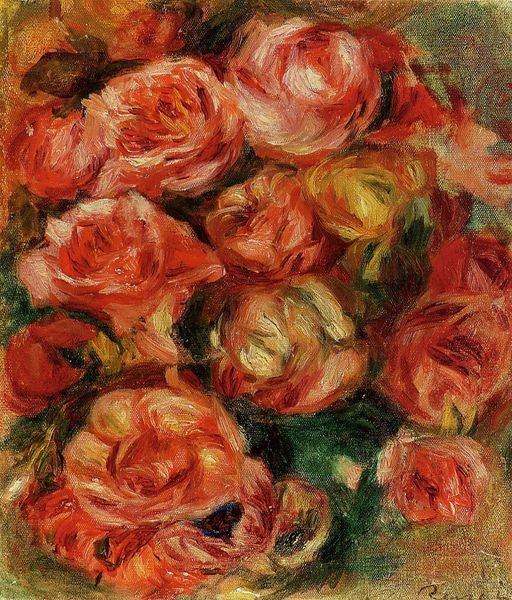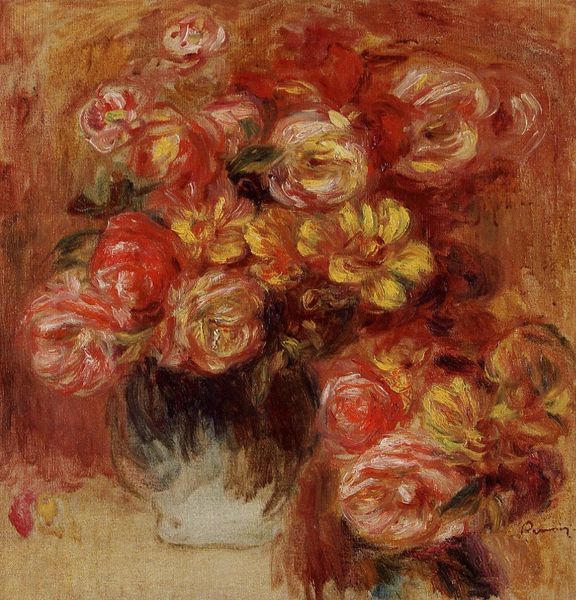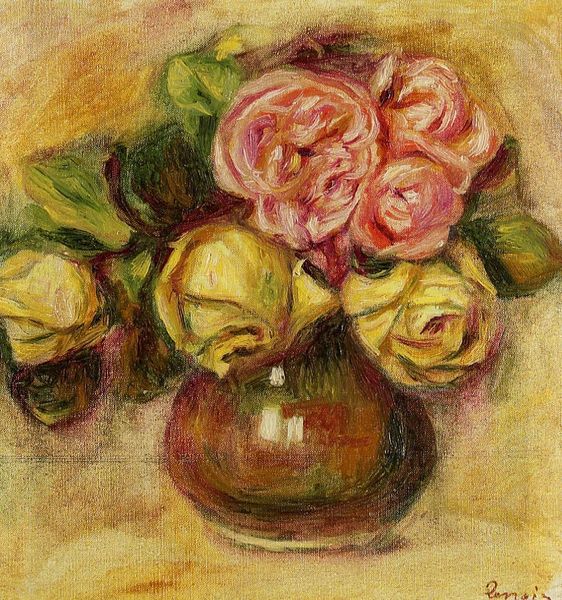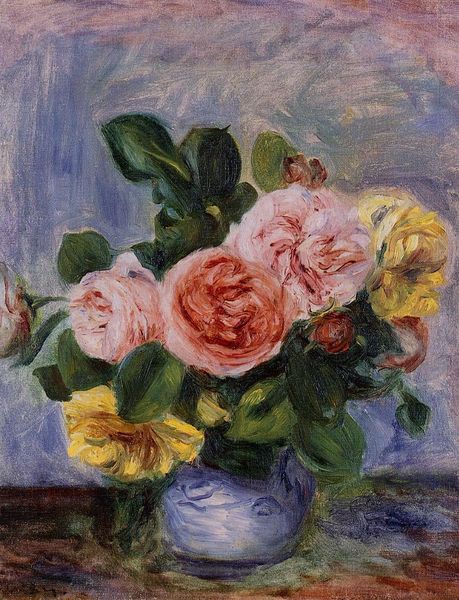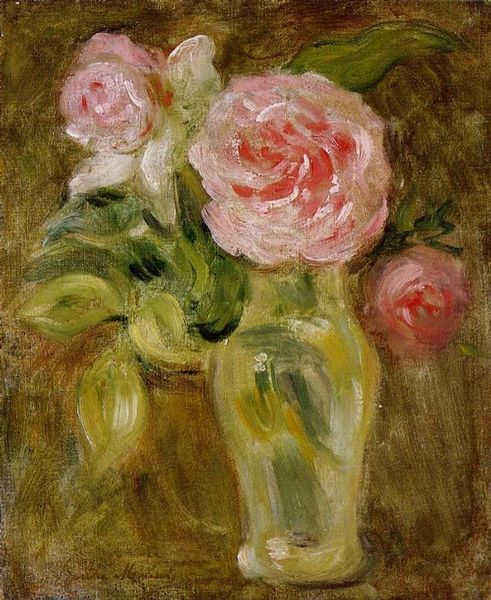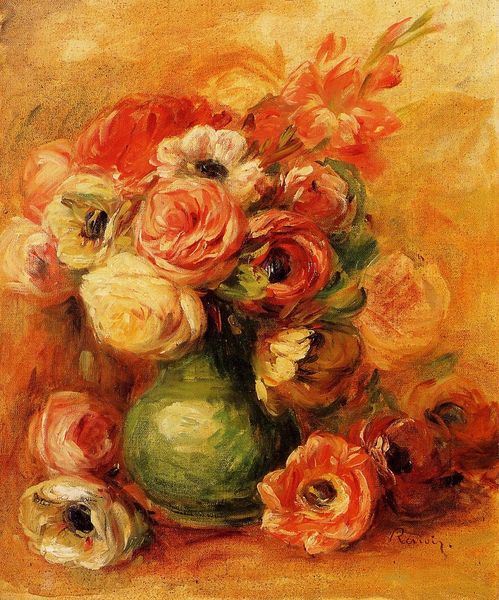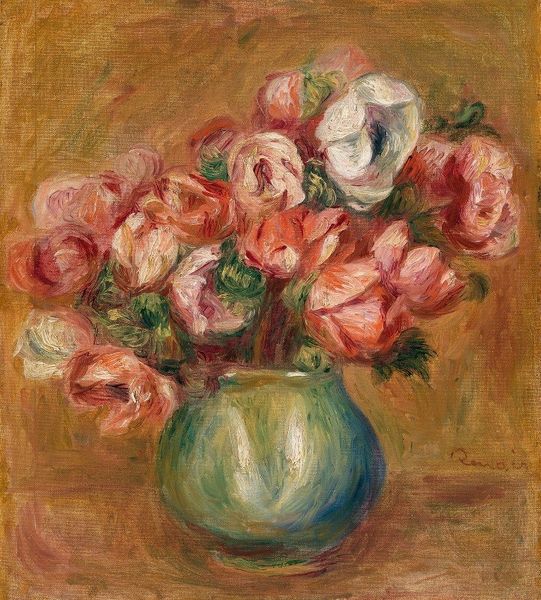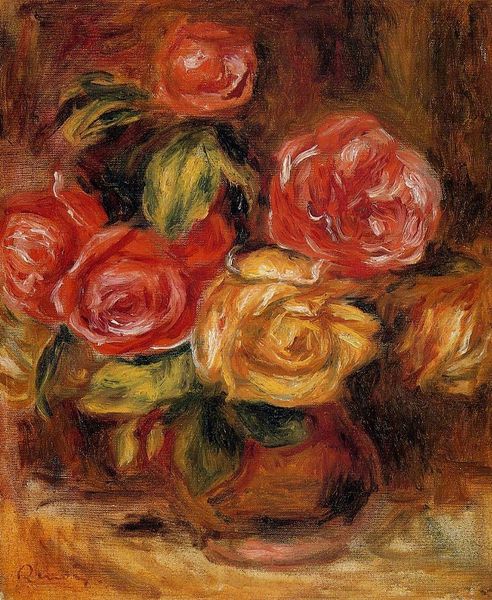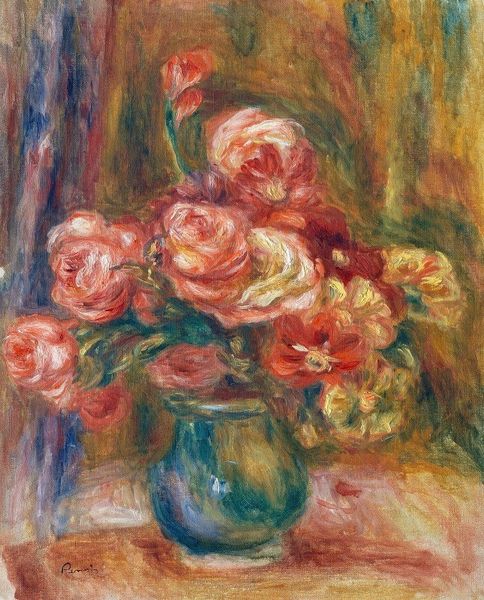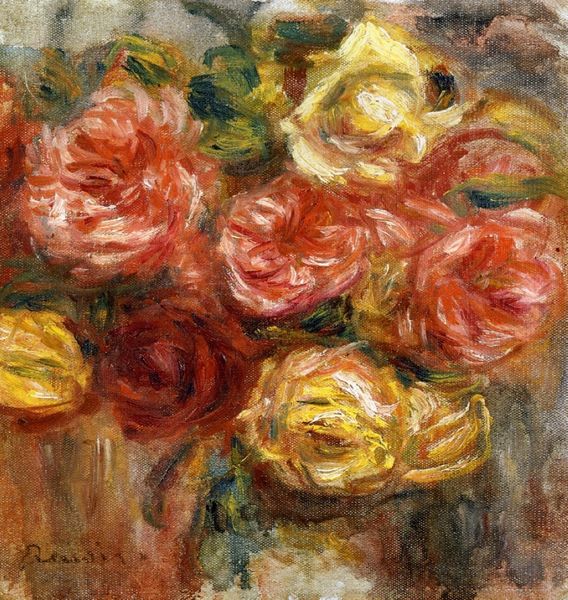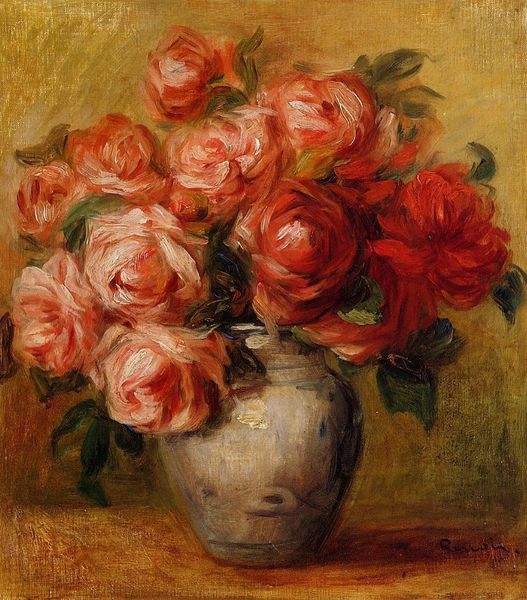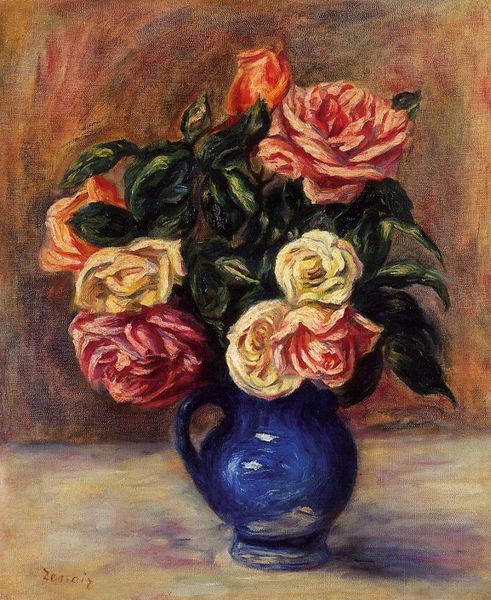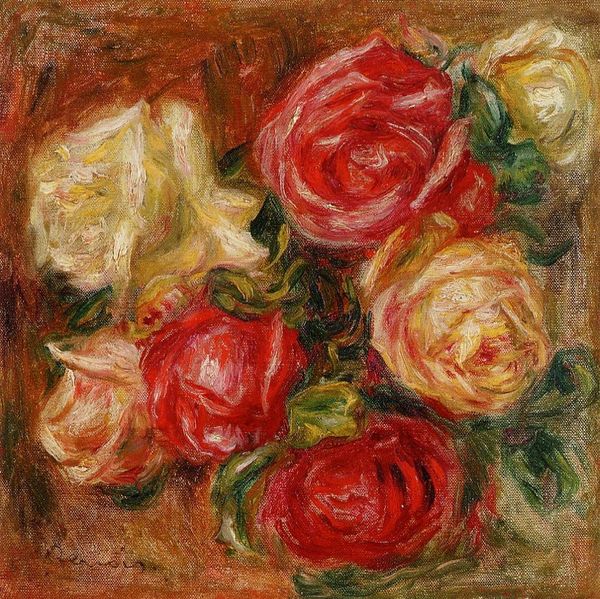
Copyright: Public domain
Curator: These are Renoir’s "Roses", painted in 1910, rendered with oil paint, bearing the thick impasto brushwork of Impressionism. Editor: I am immediately drawn to the almost edible texture. You can practically feel the build-up of the paint suggesting those delicate petals. It feels sensual, rich... almost like looking at cream. Curator: Indeed, the rose itself has powerful historical resonance. In many Western traditions, roses are symbols of love, beauty, and transience—all concepts Renoir frequently explored. Here, he zeroes in on the ephemeral beauty, that fleeting moment. Editor: Absolutely. The layering is what captivates me, though. The visible strokes – that is about labor, isn’t it? The facture insists that we understand it is created. The value shifts as light catches it are deliberate, I am struck at how his technique conveys that fragility you spoke of. He isn't hiding the artifice; rather he's laying bare the labor required to freeze such a delicate subject. Curator: Consider the rose, a symbol that extends back through centuries, frequently deployed as a metaphor for the Virgin Mary, or Divine Love itself. Renoir seems to evoke that history, but almost cheekily – secularizing its inherent divinity through the sheer indulgence of color and material. Editor: Right, so while nodding towards tradition, he redirects our gaze to the sheer pleasure of looking. We get to witness the work of capturing the immediacy and richness through the paint itself – not necessarily looking towards what these roses may signify outside the canvas. Curator: The act of looking itself becomes the subject, just like the painting process. I will now leave you to continue your sensory exploration and meditation… Editor: This reminds us that beyond grand symbolism, art often celebrates the simple joys of existence – the bloom, the texture, the everyday.
Comments
No comments
Be the first to comment and join the conversation on the ultimate creative platform.
